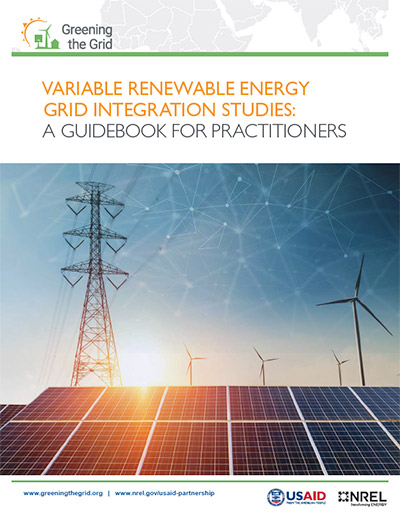What is a Grid Integration Study?
These resources pose distinct operational challenges for power systems due to their variability and uncertainty. Grid integration studies can be undertaken by various organizations, including power sector regulatory commissions, energy ministries, power system operators, and research organizations. The primary goal of a grid integration study is to evaluate how a power system can operate reliably and cost-effectively under high renewable energy scenarios. Such studies can identify future generation and transmission portfolios to achieve renewable energy targets, simulate power system operations under different scenarios, identify reliability constraints, and determine the cost of integrating high levels of VRE. Note that a grid integration study is not the same as a grid impact or grid connection study, which focus on the technical feasibility of interconnecting a single wind or solar power plant.
When to Conduct a Grid Integration Study
A grid integration study is a substantial undertaking that can take several months to a few years to complete. It is important to consider the following questions and factors to ensure that investing the necessary time and resources yield a relevant, high-quality product:
Publicly Available Tools to Support Grid Integration Studies
Visit RE Data Explorer to access high quality renewable resource data for your country or region.
Visit GPST Pillar 5 to learn more about open-source tools that can support grid integration modeling.
- Potential to inform decision making: How effectively will a grid integration study address the primary questions and concerns that stakeholders have regarding the integration of VRE into the power grid?
- Data availability: Are high-quality wind and solar resource data, as well as detailed information about the power system, readily available for the type of analyses being considered?
- Stakeholder convening mechanism: Is there a convening authority and willingness among key energy sector stakeholders to actively participate in the grid integration study process, such as joining a technical review committee (TRC)?
- Modeling staff capacity: Do trained modelers have the necessary mandate and funding within their professional roles to conduct the analyses required for a grid integration study, and are they available?
- Tool availability: What commercially available or internally developed software tools are available to address the primary questions of interest in a grid integration study, and what is the estimated time and resources required to develop the necessary tools?
If critical elements are missing, it might be more effective to invest in filling the gaps before conducting a grid integration study. There are several actions that power system stakeholders can take to integrate significant amounts of VRE generation without a full study, such as implementing wind and solar power forecasting, aggregating output over large regions, and enabling plants to provide ancillary services. Although there is no one-size-fits-all approach to grid integration, these approaches can be adapted to fit the specific needs and characteristics of a power system, and they can be implemented alongside efforts to conduct a grid integration study.


